As a UK landlord, you’re always looking for ways to boost your rental yield and maximise your property investment. This guide will walk you through practical strategies to increase your returns, from choosing the right property to optimising your letting approach. Let’s dive in and explore how you can make your property work harder for you.
1. Choose the right location
Up-and-coming areas: The key to future growth
When investing in property, location is paramount. Look for areas with promising growth potential, good transport links, and upcoming developments. These factors can significantly impact your rental yield and property value over time.
Student hotspots: A lucrative opportunity
University towns often offer excellent opportunities for landlords. Students provide a steady stream of tenants, and properties in these areas can command higher rents. Consider investing in cities like Manchester, Leeds, or Glasgow, which have large student populations.
City centres vs suburbs: Weighing your options
While city centre properties may command higher rents, suburban areas often offer better value for money and the potential for long-term capital growth. Weigh the pros and cons of each option based on your investment goals.

2. Optimise your property type
Houses of Multiple Occupation (HMOs): Maximising space and returns
HMOs can offer higher rental yields compared to single-let properties. By renting out individual rooms, you can potentially earn more overall. However, be aware of the additional regulations and management requirements that come with HMOs.
One-bedroom flats: Ideal for young professionals
One-bedroom flats in urban areas can be excellent investments, particularly for attracting young professionals. These properties often require less maintenance and can offer attractive yields in the right locations.
Family homes: Targeting long-term tenants
Larger properties suitable for families can provide stable, long-term tenancies. While the initial investment may be higher, family homes in good school catchment areas can command premium rents and attract reliable tenants.
| Property Type | Pros | Cons |
|---|---|---|
| HMOs | Higher potential yields, diversified tenant base | More regulations, higher management needs |
| One-bedroom flats | Lower maintenance, popular with young professionals | Limited capital growth potential |
| Family homes | Long-term tenancies, stable income | Higher initial investment, potentially lower yields |
3. Improve energy efficiency
Boost your EPC rating: A win-win for landlords and tenants
Improving your property’s energy efficiency can lead to lower bills for tenants and potentially higher rents for you. Consider upgrading insulation, installing double-glazed windows, or fitting energy-efficient appliances.
Green energy solutions: Future-proofing your investment
Installing solar panels or heat pumps can make your property more attractive to environmentally conscious tenants. These improvements may also future-proof your investment against upcoming energy efficiency regulations.
Smart home technology: Adding value and appeal
Integrating smart home technology, such as smart thermostats or lighting systems, can make your property stand out in the rental market and potentially justify higher rents.

4. Refurbish strategically
Kitchen and bathroom upgrades: High-impact improvements
Kitchens and bathrooms are key selling points for any property. Updating these areas can significantly increase your property’s appeal and rental value. Focus on durable, attractive finishes that will stand the test of time.
Neutral decor: Appealing to a wide range of tenants
Keep your property’s decor neutral and modern to appeal to the widest possible range of tenants. This approach can help minimise void periods and maintain broad appeal in the rental market.
Outdoor spaces: Creating additional value
If your property has outdoor space, make the most of it. Well-maintained gardens, balconies, or roof terraces can be significant selling points, especially in urban areas where outdoor space is at a premium.
5. Target the right tenants
Professional referencing: Ensuring reliable tenants
Thorough tenant referencing is crucial for ensuring a stable rental income. Use a professional referencing service to verify employment, credit history, and previous landlord references.
Long-term tenancies: Reducing void periods
Encouraging longer tenancies can help reduce void periods and minimise turnover costs. Consider offering incentives for longer lease terms or being flexible with tenancy agreements to accommodate good tenants.
Niche markets: Catering to specific tenant groups
Consider targeting specific tenant groups, such as young professionals, students, or families. Tailoring your property and marketing to these niches can help you command higher rents and reduce void periods.
6. Maximise occupancy rates
Competitive pricing: Finding the sweet spot
Research local rental prices and set your rent competitively. While you want to maximise your income, overpricing can lead to longer void periods, ultimately reducing your overall yield.
Flexible furnishing options: Catering to different preferences
Offering both furnished and unfurnished options can widen your pool of potential tenants. Be prepared to adapt your offering based on market demand and tenant preferences.
Seasonal adjustments: Capitalising on peak periods
In some areas, rental demand fluctuates seasonally. For example, university towns may see peak demand in September. Time your tenancies and marketing efforts to capitalise on these peak periods.
7. Leverage property management tools
Digital platforms: Streamlining your operations
Utilise property management software to streamline rent collection, maintenance requests, and tenant communication. These tools can help you manage your portfolio more efficiently and professionally.
Maintenance tracking: Staying on top of repairs
Regular maintenance is key to protecting your investment and keeping tenants happy. Use digital tools to track maintenance schedules and promptly address any issues.
Financial management: Keeping track of your yields
Implement robust financial management practices to accurately track your income and expenses. This will help you calculate your true net rental yield and identify areas for improvement.

8. Consider alternative letting strategies
Short-term lets: Capitalising on tourism
In popular tourist destinations, short-term lets through platforms like Airbnb can potentially yield higher returns. However, be aware of local regulations and the additional management required for this approach.
Serviced accommodation: Targeting business travellers
Serviced accommodation can command premium rates, especially in business districts. This strategy requires more hands-on management but can result in higher yields in the right locations.
Rent-to-rent: A low-investment option
The rent-to-rent strategy involves leasing a property from a landlord and then subletting it for a profit. While this approach requires less capital, it comes with its own set of challenges and legal considerations.
9. Stay informed about market trends
Local market research: Understanding your area
Keep abreast of local market trends, including rental prices, tenant demographics, and development plans. This knowledge will help you make informed decisions about your property investments.
Legislative changes: Adapting to new regulations
Stay informed about changes in landlord legislation, tax rules, and property regulations. Being proactive in adapting to these changes can help you avoid penalties and maintain your yield.
Economic indicators: Planning for the future
Monitor broader economic indicators that can impact the property market, such as interest rates, inflation, and employment figures. This wider perspective can help you make strategic decisions about your property portfolio.
10. Diversify your portfolio
Geographic spread: Mitigating local market risks
Consider diversifying your property portfolio across different geographic areas to spread risk and take advantage of varying market conditions.
Property types: Balancing your investments
Mix different property types within your portfolio, such as a combination of HMOs, single-let properties, and commercial units, to create a balanced investment strategy.
New builds vs older properties: Weighing the options
Both new builds and older properties have their advantages. New builds often require less maintenance, while older properties may offer better value and the potential for significant improvements.
Key takeaways
- Location is crucial: Look for areas with growth potential and strong rental demand.
- Optimise your property type to match your target tenant demographic.
- Improve energy efficiency to attract tenants and future-proof your investment.
- Strategic refurbishments can significantly increase your property’s appeal and rental value.
- Thorough tenant referencing and encouraging long-term tenancies can reduce void periods.
- Utilise property management tools to streamline operations and track your yields.
- Consider alternative letting strategies to potentially boost your returns.
- Stay informed about market trends and legislative changes to make informed decisions.
- Diversify your portfolio to spread risk and maximise opportunities.
Frequently Asked Questions
- What is a good rental yield in the UK?
A good rental yield in the UK typically ranges from 5-8%, depending on the location and property type. - How can I calculate my rental yield?
To calculate your gross rental yield, divide your annual rental income by the property value and multiply by 100. For net rental yield, subtract your expenses from the annual rental income before dividing. - Are HMOs a good investment for increasing rental yield?
HMOs can offer higher yields but come with additional regulations and management requirements. They can be a good option for experienced landlords. - How important is location when trying to increase rental yield?
Location is crucial. Properties in areas with high demand, good transport links, and amenities typically command higher rents and have lower void periods. - Can improving energy efficiency really increase my rental yield?
Yes, energy-efficient properties can attract tenants, potentially command higher rents, and may be more cost-effective to run in the long term.




